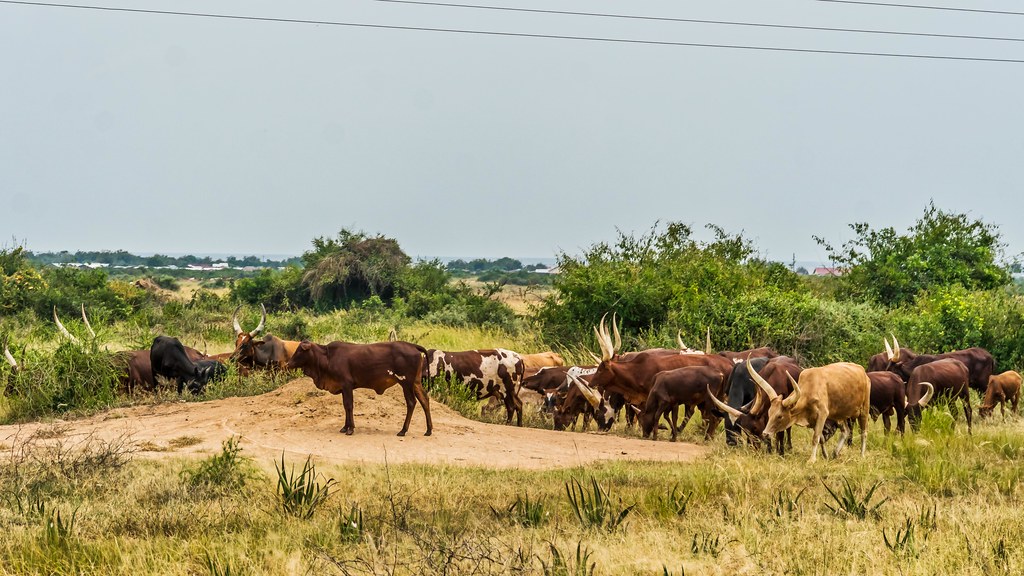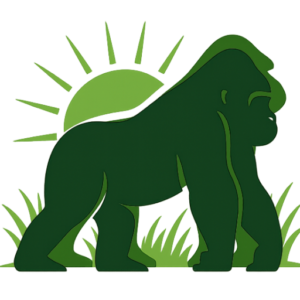Ankole Cattle – The Majestic Long-Horned Pride of Uganda
Introduction – The Living Symbol of Uganda’s Heritage
The Ankole cattle, often called the “Cattle of Kings,” are among the most magnificent and culturally revered animals in East Africa. Known for their enormous, sweeping horns and graceful stature, these cattle are more than livestock — they are a symbol of beauty, prestige, and identity among the Ankole people of southwestern Uganda. Their elegant appearance, resilience, and deep cultural significance have made them one of Uganda’s most iconic breeds, representing strength, prosperity, and tradition.
For centuries, the Ankole cattle have played a central role in the daily life of Uganda’s western highlands, shaping both the economy and the cultural fabric of the region. To see them grazing across the green hills of Mbarara, Kiruhura, Ntungamo, and Lyantonde is to witness a living embodiment of Uganda’s pastoral legacy — one that continues to inspire awe among travelers and locals alike.
History and Cultural Significance
The Ankole cattle trace their lineage to the ancient Sanga cattle of Africa, a breed that has roamed the Great Lakes region for more than 2,000 years. They were traditionally kept by the Ankole and Bahima pastoral communities, who valued them not only for their milk and beauty but also for their symbolic connection to wealth and status.
In the Ankole culture, a person’s social standing was often measured by the size and number of cattle in their herd. The animals were offered as dowries, gifts, and symbols of friendship and alliance. Songs, dances, and proverbs celebrate their grace and endurance, and their images are carved into traditional art and woven into folklore. The Ankole cattle are not just animals; they are companions, heritage, and a link between generations.
Physical Characteristics – Nature’s Art in Motion
The Ankole cattle are instantly recognizable by their striking horns, which can span up to 2.5 meters from tip to tip. These massive, hollow structures serve as natural cooling systems, with blood circulating through them to regulate body temperature in Uganda’s warm climate. Their sleek coats range from reddish-brown to golden and white, often with distinctive patterns that make each animal unique.
Despite their majestic appearance, Ankole cattle are hardy and well adapted to Uganda’s environment. They can survive on limited water and forage, making them ideal for the dry grasslands and savannah regions of western Uganda. Their resilience and natural beauty have earned them the nickname “The Cattle of Kings.”
The Ankole Way of Life
In Ankole tradition, cattle keeping is not just a livelihood — it is a way of life. Families take immense pride in their herds, and young boys grow up learning how to graze, milk, and care for the animals. The cattle are treated with deep respect, often addressed by name, and rarely slaughtered except for important ceremonies.
Milking is typically done by hand in the early morning, producing milk that is consumed fresh or fermented into “yoghurt-like ghee” locally known as eshabwe. The ghee is not only a staple food but also an important cultural delicacy, served during ceremonies and shared with honored guests.
Cattle are also central to community gatherings, with songs and dances celebrating their importance. The Ankole people’s affection for their cattle runs deep, symbolizing harmony between humans and nature.
Economic and Tourism Importance
Beyond their cultural heritage, Ankole cattle contribute significantly to Uganda’s agricultural economy. They produce rich milk with a high butterfat content, used to make butter, ghee, and other dairy products. Their unique breed is also attracting growing interest from conservationists, geneticists, and sustainable livestock farmers around the world.
In recent years, agro tourism centered around Ankole cattle has gained popularity. Visitors can experience traditional cattle-keeping firsthand — learning how to milk cows, herd them through open pastures, and understand their role in rural life. The Mbarara region, often called the “Land of Milk and Honey,” is the best place to visit ranches and interact with pastoralists. Watching these majestic creatures graze at sunset across the rolling hills is a sight that defines the soul of Uganda’s western plains.
Conservation and the Future of the Ankole Breed
While the Ankole cattle remain an enduring symbol of Uganda, their population has faced challenges due to crossbreeding with exotic dairy breeds such as Friesians. These imported breeds, though higher-yielding, threaten the purity and resilience of the indigenous Ankole line.
Fortunately, several initiatives are working to preserve the breed through selective breeding programs and conservation projects. Organizations and ranches like the Uganda Ankole Cattle Breeders Cooperative Society (UACB) and Lake Mburo Conservation Area promote sustainable farming that balances productivity with heritage preservation. The Ugandan government and cultural institutions are also encouraging farmers to maintain pure Ankole herds as part of the country’s national identity.
Experience the Ankole Cattle in Uganda
Travelers can experience the beauty of Ankole cattle through farm tours and community-based agro tourism experiences in western Uganda. At ranches in Mbarara, Kiruhura, and Lake Mburo National Park, visitors can learn about traditional pastoral practices, enjoy milk tasting, and watch herders perform their cultural dances. These tours offer a unique combination of culture, nature, and authenticity — a glimpse into Uganda’s living heritage.
For photographers and travelers, the sight of the long-horned Ankole cattle silhouetted against the golden light of the African sunset is one of the most iconic images of the Pearl of Africa.
Experience Overview
The story of the Ankole cattle is the story of Uganda itself — a tale of grace, endurance, and harmony with the land. These cattle represent a living bridge between tradition and modernity, between nature and people. Visiting their homeland is not merely a sightseeing experience; it is a cultural awakening that connects you to Uganda’s pastoral soul.
From the rhythmic sound of cowbells at dawn to the sight of long, spiraling horns glinting in the evening sun, every moment spent among the Ankole cattle reminds you of the enduring beauty of African tradition.





